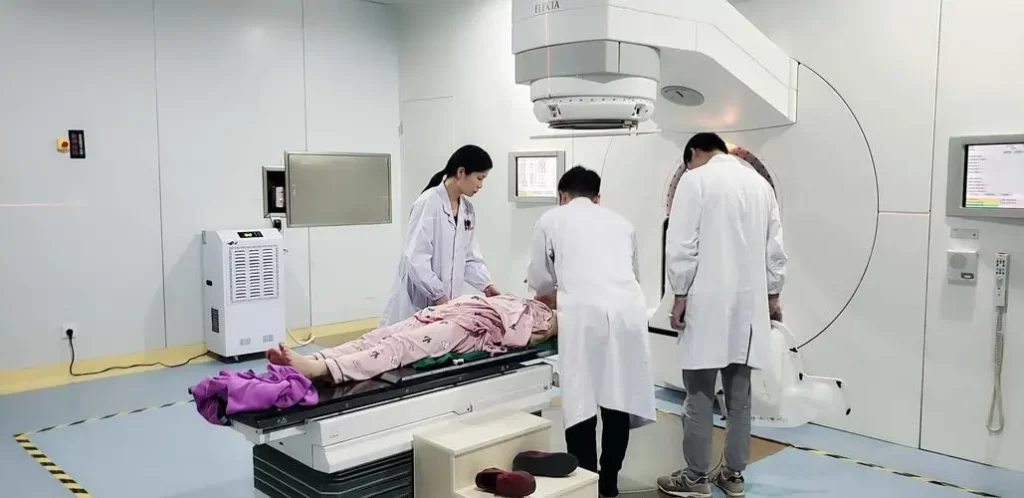Introduction: Cervical cancer is a kind of cancer with high incidence among women, which needs to be effectively prevented in advance. Many women are troubled by cervical cancer. There are many factors that lead to cervical cancer, such as smoking, sexual life, etc. The study found that the main cause of cervical cancer is HPV infection. What are the causes of cervical cancer and who is at risk

HPV is a relatively common infection problem. It usually does not cause symptoms. Generally, it can effectively clear the HPV virus from the body within two years. Many women are infected without knowing it. But if it is a persistent infection, it can cause cell changes, which can develop into cancer. What are the causes of cervical cancer and who is at risk
1. What are the risks of cervical cancer?
A. It is easy to cause infertility
Changes in cervical cancer will cause cervicitis, resulting in vaginal alkaline environment and bacterial leucorrhea, which is not conducive to sperm movement and survival. Severe cervicitis will also affect sexual life. Everyone should understand that cervicitis that is not cured for a long time or long-term incurable is an important factor leading to cervical cancer.

B. Damage to the health of the uterus
Fertilized eggs need to grow and develop in the uterus. During treatment, many people with cervical cancer need to remove the uterus for some reasons to maintain life safety. In this regard, the deprivation of women’s right to have children will inevitably make some women feel uncomfortable and even have a tendency to psychological depression.
C. Causes multiple lesions
Cervical cancer will directly cause leucorrhea odor, vaginal bleeding, waist and abdomen pain, which is an intuitive manifestation. And there are also some different recurrence site features, such as hematuria, dysuria, urgency, frequent urination, lower extremity edema, pelvic wall or abdominal mass, and also accompanied by rectal bleeding, chest tightness and cough.
D. Physiological life is affected
The female abdomen is between the rectum and the bladder. This part is a hollow area. The narrower part of the lower half of the uterus is the cervix. The opening communicates with the vagina and is the channel for menstruation. The cervix is required for the entry of air and vaginal microbes into the female uterus to prevent irritation from causing an inflammatory response. When cervical cancer occurs, it will be impossible to live a harmonious married life.

2. Are panties the “sensor” of cervical disease? If there are two colors of underwear, you should pay attention to it
A. The underwear is red
Usually normal women only have blood stains during menstruation, and some women occasionally have bleeding problems during ovulation, which are all normal physiological manifestations. But in addition to the above two phenomena, if there are frequent bloodstains on the underwear, it is necessary to do the inspection as soon as possible.
After HPV infection enters the CIN2 stage, it generally damages the mucosal epithelial layer excessively, causing ulceration and bleeding symptoms, resulting in non-menstrual bleeding.
B. The underwear appears yellow-green
The color of leucorrhea in normal women is transparent or milky white. If a yellow-green leucorrhea is found on the surface of the panties, TCT and PPV screening should also be performed in time. After infection with HPV, it will cause the proliferative epithelial cells to slough off and mix in the body secretions, causing the normal color of the leucorrhea to change.
3. Cervical cancer patients, what are the daily nursing precautions?
A. Close observation of the disease
After the operation, the patient should be closely observed for the condition, especially the vital signs, including blood pressure, respiratory pulse, body temperature, etc. Pay close attention to urine volume and color, maintain urethral patency and unobstructed breathing, and record 24-hour intake and output accurately and in detail, so as not to affect the healing wound caused by bladder filling.
B. Oral care
When a patient is undergoing chemotherapy, chemotherapy drugs can cause damage to the oral mucosa, with diffuse and channel oral damage, and even the oral mucosa is involved leading to stomatitis. Chemotherapy also usually changes the quality of saliva, lowering the pH of the saliva, causing dry mouth, and in acidic environments, mold is more likely to grow.
C. Pay attention to your diet
Cervical cancer patients should pay attention to their diet in their daily life, eat regularly, and avoid eating spicy and stimulating food.
D. Living
People with cervical cancer should also pay attention to all aspects of daily life, clean up personal hygiene in time, pay attention to neat and clean living environment, and keep relatively quiet, all of which are beneficial to nursing.
4. What are the treatments for cervical cancer?
After being diagnosed with cervical cancer, it is necessary to do a good job in treatment in a timely manner. Constant delay will lead to more serious symptoms and affect the effectiveness of treatment. There are several ways to treat cervical cancer.
A. Chemotherapy
When patients enter the recurrence, metastasis and advanced stage, chemotherapy is usually used. Currently, in order to control subclinical metastasis and reduce lesions, preoperative neoadjuvant chemotherapy (intravenous or arterial infusion chemotherapy) is also used, and it can also be used to sensitize to radiotherapy.

B. Radiotherapy
Radiotherapy, also known as radiation therapy, is usually applicable to the following patients: patients with high risk factors found in postoperative pathological examinations requiring adjuvant therapy, patients with advanced stage, preoperative treatment of large lesions in the cervix, patients with physical discomfort and patients in the early stage of surgery .
C. Surgery

Surgical treatment is generally used in patients with early stage cervical cancer. The common ones are: para-aortic lymphadenectomy or sampling, sub-extensive total hysterectomy and pelvic lymph node dissection, extensive total hysterectomy and pelvic lymph node dissection, total hysterectomy . The patient is young and able to retain normal ovarian function. In the very early stage, radical trachelectomy or cervical conization can be used. Read more tips about health on http://www.facefof.com
